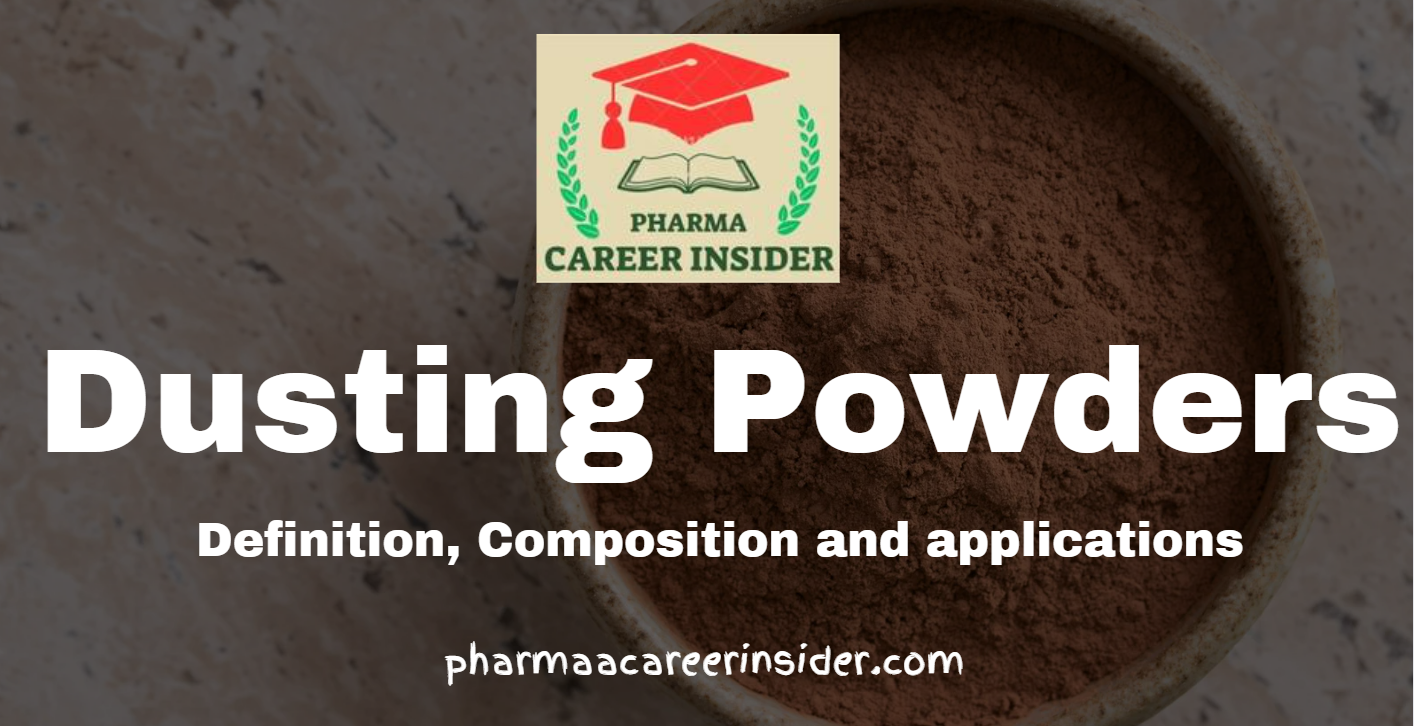Dusting powders are pharmaceutical formulations in powder form that are designed for external application, typically to the skin. These powders serve various purposes, including relieving irritation, absorbing moisture, preventing friction, and treating certain skin conditions. They are finely divided, dry substances intended for topical use.
Composition
Dusting powders consist of active and inactive ingredients. The active ingredient could be a therapeutic agent, such as an antifungal or antibacterial substance. At the same time, the inactive components often include talc, starch, zinc oxide, or other inert powders that contribute to the powder’s texture and application properties.
Key Components
1. Talc: Talc is a commonly used inert powder in dusting powders. It imparts a smooth texture to the powder and helps in absorbing moisture.
2. Starch: Starch is another common component, providing additional absorbent properties. It contributes to the overall formulation’s texture and may have soothing effects on the skin.
3. Zinc Oxide: Zinc oxide is included for its protective and soothing properties. It is known for its ability to relieve irritation and promote healing.
4. Active Ingredients: Depending on the intended purpose, dusting powders may contain active ingredients such as antifungal agents (e.g., clotrimazole), antibacterial agents, or other therapeutic substances.
Applications
1. Skin Irritation: Dusting powders relieve irritation and itching, making them suitable for conditions like heat rash or chafing.
2. Absorption of Moisture: They effectively absorb excess moisture, making them useful for areas prone to sweating, such as the underarms or groin.
3. Friction Prevention: By reducing friction, dusting powders help prevent skin chafing and discomfort, especially when skin-to-skin contact occurs.
4. Treatment of Fungal Infections: Certain dusting powders are formulated with antifungal agents to treat or prevent fungal infections, such as athlete’s foot or jock itch.
Usage Guidelines
1. Topical Application: Dusting powders are applied directly to the affected or susceptible areas of the skin.
2. Gentle Rubbing: To ensure even distribution, users are often instructed to gently rub the powder into the skin.
3. Frequency: Application frequency varies depending on the specific product and the treated condition.
Considerations
1. Avoidance of Inhaled Exposure: Care should be taken to avoid inhaling the powder during application, especially in the case of talc-containing powders.
2. Not for Internal Use: Dusting powders are formulated for external use only and should not be ingested.
Examples:
1. Johnson’s Baby Powder: A classic example used to soothe and absorb moisture on the baby’s skin.
2. Antifungal Dusting Powder: Formulated with clotrimazole or similar agents for treating fungal infections.
Dusting powders offer a versatile and practical solution for various skin conditions, providing relief, preventing moisture-related issues, and promoting overall skin comfort. When used according to instructions, they can be valuable in skincare routines and in managing specific dermatological concerns.




